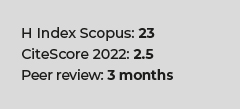Assessment of the structure, dynamics and monitoring of information systems for road traffic injuries in Peru - 2009
DOI:
https://doi.org/10.17843/rpmesp.2010.272.1476Keywords:
Accidents, traffic, Information systems, Developing countries, PeruAbstract
Objective: A baseline assessment of the structure, dynamics, and monitoring capabilities of the information systems for road traffic injuries was conducted in three Peruvian cities: Lima, Huamanga and Pucallpa. Material and methods. 50 in-depth interviews were performed with key stakeholders, including managers and operators of information systems. The instrument was developed taking into account international standards and recommendations for information systems. Results. Six information systems were identified, some of which contain integrated operational systems enabling the recollection, processing, aggregation and data analysis following automated processes. These systems are considered valuable by different stakeholders because of their ability to present data in an organized manner. A low level of collaboration and exchange of information between institutions in the diverse aspects of data collection, processing and usage was observed. Officially, formal collaboration agreements between institutions do exist, potentially enabling more collaborative work. An interest was expressed in establishing an integrated information system due to the need for detailed and solid/trusted information that maximizes the use of existing resources. Conclusions. Current information systems for road traffic injuries have limitations. The actual use and utility of the information for decision-making for prevention of road traffic injuries nationwide is limited.Downloads
Download data is not yet available.
Downloads
Published
2010-06-25
Issue
Section
Special Section
How to Cite
1.
Miranda JJ, Paca-Palao A, Najarro L, Rosales-Mayor E, Luna D, Lopez L, et al. Assessment of the structure, dynamics and monitoring of information systems for road traffic injuries in Peru - 2009. Rev Peru Med Exp Salud Publica [Internet]. 2010 Jun. 25 [cited 2024 Apr. 19];27(2). Available from: https://rpmesp.ins.gob.pe/index.php/rpmesp/article/view/1476



























